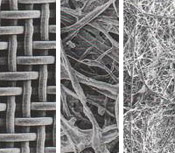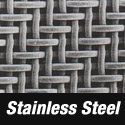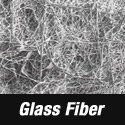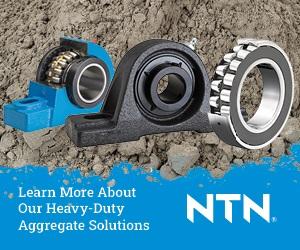

Did you know that over 75 percent of hydraulic system failures are due to contamination? These failures can lead to substantial costs, including production downtime, component replacements, frequent fluid changes, expensive fluid disposal, increased maintenance expenses, and a higher rate of product defects. The good news is that most of these problems can be avoided with proper hydraulic fluid filtration.
Hydraulic Fluid’s Four Functions
Hydraulic fluid serves four vital functions:
- Energy Transmission: It transfers energy within the system.
- Lubrication of Moving Parts: It ensures smooth operation by lubricating internal components.
- Heat Regulation: It acts as a heat transfer medium to control temperature.
- Clearance Sealing: It seals small clearances between moving parts to prevent leaks.
Contamination’s Impact on Hydraulic Systems
Hydraulic fluid contamination interferes with all four functions due to the extremely tight clearances in hydraulic components. Even particles as small as 0.0002 to 0.0005 inches (five to 12 microns) can cause problems, so it’s essential to filter out tiny particles that can interfere.


The Chain Reaction of Contamination
When dirt particles infiltrate the spaces between moving components, they damage surfaces, increase clearances, and generate more particles in the process. This contamination accelerates as the system operates, resulting in internal leakage (slippage), reduced efficiency of pumps, motors, and cylinders, and decreased valve performance.
Sludge or silting can cause parts to stick, leading to premature component failure, costly replacements, production losses, and unplanned downtime.
Identifying Contamination Problems with Hydraulic Oil Analysis
To detect contamination problems, collect oil samples from your hydraulic systems and analyze them according to ISO 4406:1999 standards with a hydraulic oil test kit. This analysis should include measurements of water content, oxidation, viscosity, acidity, and additive depletion.
Understanding ISO 4406:1999 Ratings


ISO 4406:1999 rates contamination at three size levels: four microns, greater than six microns, and greater than 14 microns per cubic centimeter.
This rating system illustrates the impact of contamination. Higher ratings indicate more contaminants passing through the system annually.
For example, at ISO 22/21/18, a 66-gallon-per-minute hydraulic pump allows four tons of dirt to pass through it in a year, resulting in a pump lifespan of only two years.
However, with proper filtration to achieve an ISO 16/14/11 rating, only 55 pounds of dirt will pass through in a year, extending the expected pump life to seven years.
When to Change Your Hydraulic Fluid
Knowing when to change hydraulic fluid is crucial for maintaining a well-functioning hydraulic system. If you see any of these signs, it’s time to change your hydraulic fluid:
- Regular Fluid Analysis: Routine oil analysis is a critical tool for assessing the condition of your hydraulic fluid. It can detect several key factors:
-
- Contamination Levels: Elevated levels of contamination, including dirt, debris, or particles, can compromise the fluid’s effectiveness.
- Water Content: The presence of water can lead to corrosion and reduced lubrication capabilities.
- Oxidation: Oxidation results in darkened oil, varnishing, and sludge formation, affecting the fluid’s performance.
- Viscosity Changes: An increase in viscosity can impact the fluid’s flow and efficiency.
- Total Acid Number (TAN): TAN measures oxidative degradation, and a high TAN indicates the fluid is breaking down.
- Visible Signs of Contamination: Regularly inspect your hydraulic system for visible signs of contamination, such as excessive dirt or debris buildup in filters, reservoirs, or on components. Contamination can accelerate fluid degradation.
- Fluid Temperature: Even though hydraulic fluid is designed to handle heat and pressure, there are limits. High fluid temperatures can lead to fluid breakdown. If your hydraulic fluid becomes too hot, it may change in color and develop an unusual odor. Elevated temperatures accelerate oxidative degradation. If you notice the color darkening or an unusual smell, it’s time to change your hydraulic fluid.
- Additive Depletion: Hydraulic oils contain additives that enhance performance and protect against wear. Over time, these additives can deplete. Assess the concentration of key additives, such as zinc, through elemental analysis compared to new oil standards.
- Performance Changes: Monitor the performance of your hydraulic system. A decrease in efficiency, slower operation, increased fluid leakage, or unusual system behavior can indicate fluid-related issues.
- Manufacturer’s Recommendations: Always adhere to the manufacturer’s guidelines regarding fluid replacement intervals. They provide specific recommendations based on the equipment’s design and usage.
- Unplanned Downtime: Frequent unplanned downtime due to hydraulic system failures can be a clear indicator that your hydraulic fluid requires attention. Regular fluid maintenance can help reduce these costly interruptions.
Selecting the Right Filter


The two important hydraulic fluid filter specifications are micron size and efficiency. Filters come in various forms: mesh, paper matting, and glass fiber.
Filters have a Beta efficiency ratio, which indicates their effectiveness. A filter labeled B3=>2 removes 50 percent of particles three microns or larger, while a filter labeled B3=>200 removes 99.5 percent of such particles. Filter efficiency is essential for equipment protection.
Filters come in various forms: mesh, paper matting, and glass fiber.
- Stainless Steel “G” Mesh offers surface filtration and is partially cleanable, available in sizes like 25, 40, and 80 microns.
- “P” Paper Matting provides deep filtration and high stability in the ten and 25-micron size range.
- “VG” Glass Fiber offers even deeper filtration with various fineness levels, including four, five, seven, ten, 15, and 20 microns.
Types of Hydraulic Fluid Filters in Hydraulic Systems
These four types of hydraulic fluid filters are positioned in different locations throughout the system to filter out contaminants.
- Suction Filters are positioned on the pump’s suction side and protect against large particles and non-system contamination.
- Pressure Filters are downstream from the pump and safeguard sensitive components from pump-generated contamination, often using B6=>200 filters.
- Return Line Filters are the last line of defense before fluid enters the reservoir. They capture wear debris and particles entering through worn seals, recommended at B3=>200 levels.
- Off-Line Filtration involves a continuous pump, filter, motor, and hardware setup while the hydraulic system is offline. This method can be effective against solid contaminants and offers water removal with “Watersorp” elements.
Hydraulic filter tanks, in-line hydraulic filters, oil breather filters, and off-line hydraulic filters can all be used to form an effective hydraulic fluid filtration system, which ensures clean hydraulic fluid and efficient power transfer. Off-line filters are often packaged on a portable hydraulic filter cart, which can be moved around as needed.
Extend Filter Life By Cleaning New Hydraulic Oil
Even brand-new hydraulic fluid is not free from contamination. Typically, new fluid, before filtration, averages an ISO 22/20/18 rating and should be filtered before use for optimal cleanliness and efficiency.
To achieve maximum service life and reliability, all hydraulic systems should have their fluid filtered.
Proper filtration is crucial for preventing hydraulic system failures and extending the effective life of your components. For more information or assistance with fluid power systems and components, contact IBT Fluid Power Group.





